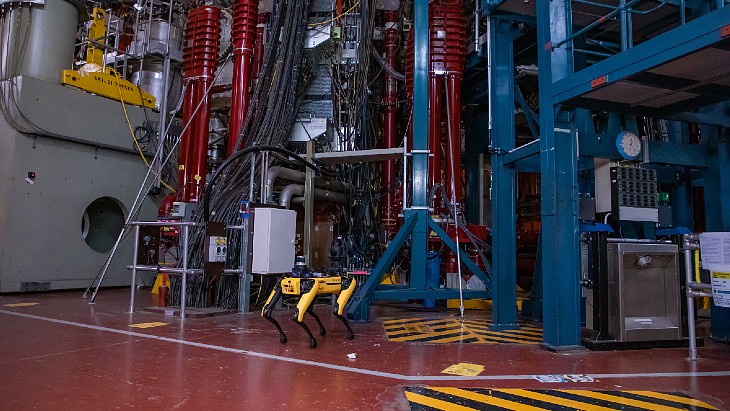The aim of the trial was to demonstrate that part of a fusion facility's maintenance can be carried out by an autonomous robot, without the need for humans to make decisions and operate them, and in doing so pave the way for autonomous maintenance and decommissioning in future fusion facilities where conditions may limit people's safe access.
Robert Skilton, Head of Research at the UK Atomic Energy Authority (UKAEA) Remote Applications in Challenging Environments division, said: "The project aimed to validate the reliability of autonomous robotic technology and instill trust and confidence in their use for safe and efficient inspections in fusion facilities over extended periods. This deployment demonstrates that autonomous robots can enhance safety and cut costs. These ‘next generation’ solutions are becoming ready to be used in other industrial facilities such as nuclear decommissioning, environmental clean-up, and disaster relief."
Nick Hawes, Professor of AI & Robotics, University of Oxford, said: "Projects like this demonstrate the value of autonomous robots ... they also ground our science in real use cases, and provide requirements and constraints that drive us to invent new AI and robotics algorithms."
During the trial the inspection tasks involved mapping the facility, taking sensor readings and avoiding obstacles and personnel involved in the decommissioning process and collected "essential data on JET's environment and overall status twice a day". The robot also knew when to dock and undock with its charging station, to ensure it could complete the task without humans having to intervene.
What is JET?
JET was a tokamak fusion system with a doughnut-shaped vacuum chamber where, under the influence of extreme heat and pressure, gaseous hydrogen fuel becomes a plasma. The charged particles of the plasma can be shaped and controlled by massive magnetic coils placed around the vessel to confine the hot plasma away from the vessel walls. It was the only tokamak fusion machine in operation capable of handling tritium fuel, and was a key device in preparations for the multinational ITER fusion research project which is currently under construction in southern France.
JET was a European project built and used collaboratively by European researchers. It is now owned, and in recent years has been operated by, the UKAEA, and used by scientists from 28 European countries to conduct research into the potential for carbon-free fusion energy in the future through work coordinated by the EUROfusion consortium. The tokamak's first deuterium-tritium experiments took place in 1997.
JET's final experiments using deuterium and tritium fuel were conducted over seven weeks from August to October last year, ahead of its retirement following its final pulse in December. During those experiments, JET produced the largest amount of energy achieved in a fusion experiment, breaking its own record set in 2021. Following its retirement JET has moved on to repurposing and decommissioning, a process expected to last until about 2040, and which is seen as further opportunities to discover and develop new technologies and skills for future fusion.





_91467.jpg)
_47120.jpg)
_16439.jpg)






